---
title: "AuroraGPT: Foundation Models for Science"
# subtitle: "Foundation Models for Science"
date: 2025-02-12
number-sections: false
# cookie-consent: true
location: "[Foundation Models for the Electric Grid](https://events.cels.anl.gov/event/601/)"
location-url: "https://events.cels.anl.gov/event/601/"
image: ./assets/thumbnail.png
bibliography: ../../references.bib
editor:
render-on-save: true
freeze: auto
twitter-card:
image: ./assets/thumbnail.png
creator: "saforem2"
site: "saforem2"
title: "AuroraGPT: Foundation Models for Science"
description: "Presented at the 3rd In-Person Workshop: Foundation Models for the Electric Grid"
card-style: summary
open-graph:
title: "AuroraGPT: Foundation Models for Science"
description: "Presented at the 3rd In-Person Workshop: Foundation Models for the Electric Grid"
image: ./assets/thumbnail.png
citation:
author: Sam Foreman
type: speech
url: https://samforeman.me/talks/aurora-gpt-fm-for-electric-grid/slides
format:
revealjs:
# logo: "/assets/anl_logos/anl-wireframe-ambivalent.svg"
# width: 1400
# height: 1024
max-scale: 6.0
min-scale: 0.1
shift-heading-level-by: -1
center: true
footer: "[samforeman.me/talks/aurora-gpt-fm-for-electric-grid/slides](https://samforeman.me/talks/aurora-gpt-fm-for-electric-grid/slides)"
slide-url: https://samforeman.me/talks/aurora-gpt-fm-for-electric-grid/slides.html
template-partials:
- title-slide.html
title-slide-attributes:
data-background-size: cover
data-background-iframe: https://emilhvitfeldt.github.io/quarto-iframe-examples/stars/index.html
# shift-heading-level-by: -1
html: default
gfm:
output-file: "AuroraGPT-FM-for-electric-grid.md"
---
## 🎯 AuroraGPT: Goals {.smaller background-color="white"}
::: {.flex-container style="flex-direction: column; justify-content: space-around;"}
::: {.flex-container style="flex-direction: row; justify-content: space-around; align-items:center;"}
::: {.column style="width: 55%"}
::: {.blue-card}
[**AuroraGPT**](https://auroragpt.anl.gov): _General purpose scientific LLM_
Broadly trained on a general corpora plus scientific {papers, texts, data}
:::
- **Explore pathways** towards a "Scientific Assistant" model
- **Build with international partners** (RIKEN, BSC, others)
- **Multilingual** English, 日本語, French, German, Spanish
- **Multimodal**: images, tables, equations, proofs, time series, graphs, fields, sequences, etc
:::
::: {.column style="text-align: center;"}
::: {#fig-awesome-llm}

Image from {{< iconify fa github >}} [Hannibal046 / `Awesome-LLM`](https://github.com/Hannibal046/Awesome-LLM)
:::
:::
:::
::: {#fig-timeline}
{width="75%" style="margin-left:auto;margin-right:auto;"}
Credit to the entire AuroraGPT team for slides.
:::
:::
::: {.notes}
- Here to talk about AuroraGPT, Argonne's internal effort to build a general
purpose scientific LLM, broadly trained on a general corpora of text +
scientific {papers, text, data}
- As part of this effort, we plan to...
- Explore pathways, build with international partners, multi-{lingual, modal}
- Rough timeline of the project and deliverables:
- 202{3,4}: text-only models, plan to release a series of {7B, 70B, 1T} models
- 202{4,5}: Basic multi-modal models
- 202{5,6}: Advanced scientific multimodal models
:::
## 🦙 Issues with "Publicly Available" LLMs {background-color="white"}
- **Trust** and **Safety**:
- Skepticisim about deployment in critical infrastructure
- Correctness and reliability of model outputs
- **Transparency**:
- Data governance, what was used for pre-training? fine-tuning?
- **generally unknown**
- What is _open source_?
- Model weights?
- Pre-training \{code, logs, metrics\} ?
::: {.notes}
- Why are we doing this?
- What is the issue with current LLMs?
- **Trust and safety**
- Hallucinations, false confidence
- Can this be reliably mitigated?
- Scaling up inference compute seems to help
- reasoning models, TTT, etc.
- **Transparency**
- Different frontier labs have different definitions of "open source"
- e.g. Llama no longer releases base models
- Libgen ??
- AllenAI institute, olmo models good example
:::
## 🧪 AuroraGPT: Open Science Foundation Model {background-color="white"}
::: {#fig-aurora-gpt .r-stretch style="vertical-align:center;"}

High-level overview of AuroraGPT project
:::
::: {.notes}
- AuroraGPT will be a publicly distributed, open source foundation model for
open science
- Is being trained on:
- Scientific / engineering structured data
- General text, media, news, etc.
- Large amounts of low to medium quality data
- Much less high quality data (that is publicly available for use)
- This data is then cleaned, processed, de-duplicated and used for the initial
pre-training phase of the model
- The vast majority of the overall compute is spent during this initial
pre-training phase
- This is the group I help to lead and will be talking a bit about today
- The initial pre-training phase is currently underway
- Eventually, given a bit of time, effort and magic, the model will be
ready for fine-tuning and additional training for a variety of downstream
tasks
- The pretrained model will then be handed off for additional fine-tuning on a
variety of downstream tasks
- Scientific discovery
- Accelerate scientific tasks
- Digital twins
- Inverse design
- Code optimization
- Accelerated simulations
- Autonomous experiments
- Co-design
- Becoming increasingly clear that LLMs have the potential to drastically
accelerate computational science
- We've seen this already for {GenSLMs, Weather / Climate / Earth Systems
Modeling, Particle Physics, etc.}
:::
## 📊 AuroraGPT: Outcomes {background-color="white"}
- **Datasets and data pipelines** for preparing science training data
- **Software infrastructure and workflows** to train, evaluate and deploy LLMs
at scale for scientific resarch purposes
- {{< fa brands github >}} [argonne-lcf/Megatron-DeepSpeed](https://github.com/argonne-lcf/Megatron-DeepSpeed)
[End-to-end training and inference, on _any_ GPU cluster]{.dim-text}
- {{< fa brands github >}} [argonne-lcf/inference-endpoints](https://github.com/argonne-lcf/inference-endpoints)[^globus]
[Inference endpoints for LLMs, hosted @ ALCF]{.dim-text}
[^globus]: Relies _heavily_ on [Globus](https://globus.org) (next talk!)
- **Evaluation of state-of-the-art LLM Models**:
- Determine where they fall short in deep scientific tasks
- Where deep data may have an impact
## 📚 What do we hope to get? {background-color="white"}
- **Assessment of the approach** of augmenting web training data with two forms
of data specific to science:
- Full text scientific papers
- Structured scientific datasets (suitably mapped to narrative form)
- **Research grade artifacts** (**models**) for scientific community for
adaptation for downstream uses[^mprot-dpo]
- **Promotion of responsible AI** best practices where we can figure them out
- **International Collaborations** around the long term goal of _AGI for science_
[^mprot-dpo]:|
🔔 Gordon Bell Finalist: [MProt-DPO](https://dl.acm.org/doi/10.1109/SC41406.2024.00013) [@mprot-dpo2024]
::: {.notes}
- Deliverables:
- datasets, pipelines
- software infrastructure, workflows to interface with science applications
- checkpoints, models, logs, workbook, insights, etc.
- Hope to understand:
- How different state-of-the-art models perform at different scientific tasks
- where deep data may have an impact
- feasibility of generically augmenting text with scientific structured data
- Huge undertaking that will require large international collaborations around
long term goal of AGI for science
- Extra points:
- Well known that LLMs are good for non-consequential tasks
- Known to "hallucinate" and create false information
- Can this be mitigated reliably ??
:::
## 🌌 Aurora {background-color="white"}
::: {.flex-container style="align-items: center;"}
::: {.column style="width:5%;"}
::: {#tbl-aurora}
| <!-- --> | <!-- --> |
|---------:|:--------|
| Racks | 166 |
| Nodes | 10,624 |
| CPUs | 21,248 |
| GPUs | 63,744 |
| NICs | 84,992 |
| HBM | 8 PB |
| DDR5c | 10 PB |
Aurora Specs {.responsive .striped .hover}
:::
:::
::: {.column style="text-align:center"}
::: {#fig-aurora .r-stretch}
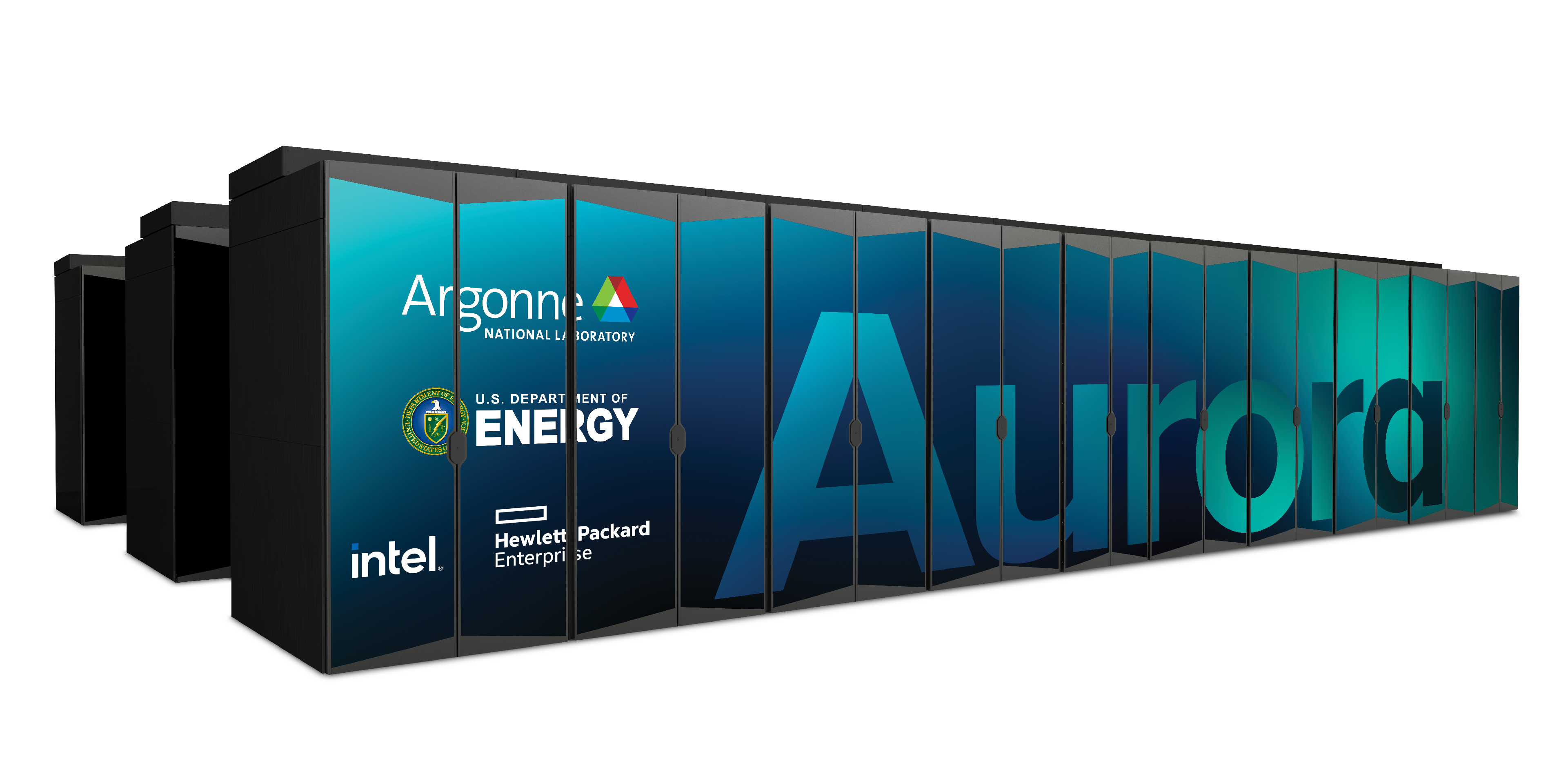
Aurora: [Fact Sheet](https://www.alcf.anl.gov/sites/default/files/2024-07/Aurora_FactSheet_2024.pdf).
:::
🏆 [Fastest AI system in the world](https://www.intel.com/content/www/us/en/newsroom/news/intel-powered-aurora-supercomputer-breaks-exascale-barrier.html)
:::
:::
<!--
> Argonne's exascale system will be used to dramatically advance scientific
> discovery and innovation.
-->
## 🤖 ALCF AI Testbed {background-color="white"}
- ALCF AI Testbed Systems are in production and
[available for allocations](https://accounts.alcf.anl.gov/#/allocationRequests)
to the research community
- Significant improvement in time-to-solution and energy-efficiency for diverse
AI for science applications.
- [NAIRR Pilot](https://nairrpilot.org/)
::: {.red-card style="color: #FF5252; font-size:90%;"}
Up to $≈$ **25**$\times$ throughput improvement for genomic FMs
with **6.5**$\times$ energy efficiency
:::
::: {.flex-container style="align-items: flex-start; gap: 2pt; text-align:left;"}
::: {#fig-sambanova .column style="width:22%; text-align: left;"}
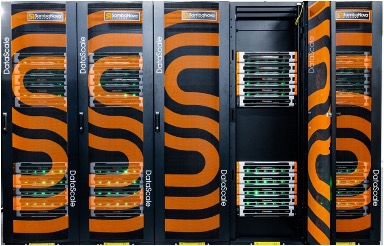
**SambaNova SN-30** 2nd Gen, 8 nodes with 64 AI Accelerators
:::
::: {#fig-graphcore .column style="width:22%; text-align:left;"}
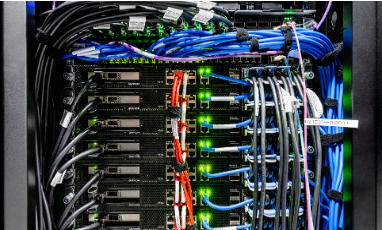
**Graphcore Bow**: Pod-64 configuration with 64 accelerators
:::
::: {#fig-cerebras .column style="width:22%; text-align:left;"}

**Cerebras**: 2x CS-2 WSE with Memory-X and Swarm-X technologies
:::
::: {#fig-groq .column style="width:22%; text-align:left;"}

**GroqRack**: 9 nodes, 8 GroqChip v1.5 Tensor streaming processors accelerators per node
:::
:::
## 👥 Team Leads {.smaller background-color="white"}
<!--
| Team | Lead(s) | |
| :----: | :-------- | :--------------------------------------------------------: |
| **Planning** | Rick Stevens | {height="40pt"} |
| | Ian Foster | {height="40pt"} |
| | Rinku Gupta | {height="40pt"} |
| | Mike Papka | {height="40pt"} |
| | Fangfang Xia | {height="40pt"} |
| **Data** | Ian Foster | {height="40pt"} |
| | Robert Underwood | {height="40pt"} |
| **Models + Training** | Venkat Vishwanath | {height="40pt"} |
| | Sam Foreman | {height="40pt"} |
| | Sam Foreman | {height="40pt"} |
| **Inference** | Eliu Huerta | {height="40pt"} |
| | Azton Wells | {height="40pt"} |
: Team Leads {#tbl-team-leads}
| **Models / Training** | Venkat Vishwanath | {height="40pt"} |
| | Robert Underwood | {height="40pt"} |
-->
::: {style="font-size: 100%;"}
::: {.flex-container style="text-align: center; align-items: center;"}
**Planning**
![Rick Stevens[^lead]](./assets/team/rick-stevens.png){height="75pt"}
{height="75pt"}
{height="75pt"}
{height="75pt"}
{height="75pt"}
{height="75pt"}
:::
::: {.flex-container style="text-align: center;"}
::: {.col}
**Data**
{height="75pt"}
{height="75pt"}
:::
::: {.col}
**Training**
{height="75pt"}
![[Sam Foreman]{style="color: #ff1a8f; background-color: oklch(from #ff1a8f calc(l * 1.15) c h / 0.1); font-weight: 500;"}](./assets/team/sam-foreman.png){height="75pt"}
:::
::: {.col}
**Evaluation**
{height="75pt"}
{height="75pt"}
{height="75pt"}
:::
::: {.col}
**Post**
{height="75pt"}
{height="75pt"}
:::
::: {.col}
**Inference**
{height="75pt"}
:::
::: {.col}
**Comms**
{height="75pt"}
{height="75pt"}
:::
::: {.col}
**Distribution**
{height="75pt"}
:::
:::
:::
[^lead]: Lead
## 🤝 Teams {auto-animate=true background-color="white"}
::: {.flex-container}
::: {.column}
- **Planning**
- **Data Prep**
- Accumulate 20+ T tokens of high-quality scientific text and structured data
- [**Models / Training**]{style="background: oklch(from #ff1a8f calc(l * 1.15) c h / 0.1); border: 1px solid #ff1a8f; border-radius: 0.25px;"}[^me]
- Train (entirely from scratch) a series of models on publicly available data
- **Evaluation**
- Skills, trustworthiness, safety, robustness, privacy, machine ethics
[^me]: Co-led by: Venkat Vishwanath, **Sam Foreman**
:::
::: {.column}
- **Post-Training**
- Fine-tuning, alignment
- **Inference**
- Model serving, API development / public-facing web services
- **Distribution**
- Licensing, generating and distributing artifacts for public consumption
- **Communication**
:::
:::
## 📚 Data {background-color="white"}
::: {.green-card}
✅ **Goal**: Assemble a large corpus of documents (general and scientific) to
train and fine-tune AuroraGPT models
:::
- **Challenges**: Avoid / detect contamination with benchmarks
- Respect copyright (ACM Digital Library), privacy, and ethical
considerations
- **Performance Challenges**: _High throughput_ data processing
- Converting PDF $\rightarrow$ text (math formula, figures)
- Convert science information (data) into text (narratives)
- De-duplication (syntactic and semantic) of scientific documents (to avoid
memorization, bias)
- **Quantity**: Considering 20+ Trillion tokens $\rightarrow$ $\approx$
100M papers
- **Domains**: All (long-term) scientific domains, starting with:
- Material science, Physics, Biology, Computer Science, Climate Science
## ⏱️ Dataset Processing {background-color="white"}
- To train a fixed model on trillions of tokens requires:
1. **Aggregating** data from multiple different _corpora_
(e.g. ArXiv, Reddit, StackExchange, GitHub, Wikipedia, etc.)
1. **Sampling** _each training batch_ according to a fixed distribution
across corpora
1. **Building** indices that map batches of tokens into these files
(indexing)
::: {.red-card}
The original implementation was _slow_:
- Designed to run _serially_ on a **single device**
- **Major bottleneck** when debugging data pipeline at scale
:::
### 🚀 Accelerating Dataset Processing: Results {background-color="white"}
::: {.flex-container style="padding: 10pt; justify-content: space-around; align-items: flex-start;"}
::: {.column style="width:25%;"}
- Original implementation:
- **Slow**!
- [🐌 \~ 1 hr]{.dim-text}/2T tokens
- [x] Fix:
- Wrote _asynchronous_, **distributed** implementation
- _significantly_ improves performance (**30x** !!)
- 🏎️💨 [\~ **2 min**]{style="color:#2296F3;"}/2T tokens
<!--
::: {style="text-align:center; margin-block-start: 1rem;"}
🐌 [~~1 hr~~]{.dim-text} $\longrightarrow$ $\approx$ **2 min**]{style="background: oklch(from #2296F3 calc(l * 1.15) c h / 0.1); border: 1px solid #2296F3; border-radius: 0.25px; color:#2296F3;"} 🏎️💨
:::
-->
:::
::: {.column}
{#fig-data-processing .r-stretch}
:::
:::
## 🦜 Model Training {.smaller background-color="white"}
:::: {.flex-container style="text-align: left; width: 100%; justify-content: space-around; line-height: 1em; gap: 5pt;"}
::: {.column style="background: oklch(from #03BD00 calc(l * 1.15) c h / 0.1); border: 1px solid #03BD00; border-radius: 0.25em; padding: 3pt 8pt;"}
✅ [**Goals**]{style="color: #03BD00;"}
- Want training runs at scale to be:
- efficient
- stable
- reproducible
- This requires:
- robust data pipelines / file IO
- effectively overlapping compute with communication
- stability across {network, filesystem, machine}
- 3D / Multi-dimensional Parallelism strategies
- Large batch training
- Second order optimizers
- Sub-quadratic attention
- State space models
- _Highly optimized GPU kernels_
:::
::: {.column style="background: oklch(from #E90102 calc(l * 1.15) c h / 0.1); border: 1px solid #E90102; border-radius: 0.25em; padding: 3pt 8pt;"}
❌ [**Challenges**]{style="color: #E90102;"}
- _Looong time_ to train, can be:
- weeks (even months) of continuous training
- order of magnitude longer than typical NN training jobs
- Stability issues:
- failures are expensive (but inevitable)
- stragglers common at scale
- Individual jobs are:
- **fragile**
- only as good as the worst rank
- one hang or bad worker can crash job
- network / filesystem / other-user(s) dependent
- Cost / benefits of different collective communication algorithms
- depend on optimized / efficient implementations
- Network performance
- _Highly optimized GPU kernels_
:::
::::
::: aside
{{< iconify fa github >}} [argonne-lcf / Megatron-DeepSpeed](https://github.com/argonne-lcf/Megatron-DeepSpeed)
:::
<!--
## 📉 Loss Curve {background-color="white"}
::: {.content-visible when-format="html" unless-format="revealjs"}
::: {#fig-loss-curve}
{.width="90%" style="margin-left:auto;margin-right:auto;"}
Loss curve during training on 2T tokens.
:::
:::
::: {.content-visible when-format="revealjs"}
::: {#fig-loss-curve}
{width="90%" style="margin-left:auto;margin-right:auto;"}
Loss curve during training on 2T tokens.
:::
:::
-->
## 🤔 Evaluating FM Skills for Science {background-color="white"}
- What to measure?
- **Knowledge Extraction, Retrieval, Distillation, Synthesis**: LLM is
provided a question or instruction and a truthful answer is expected
- **Text Grounded**: Answers are expected to be fully grounded on
peer-reviewed references to support responses
- **Reasoning**: LLMs are expected to solve deductive (prove a theory or
hypothesis from formal logic and observations), inductive (validate /
explain observations from theories) problems
- **Creativity**: A creative answer is expected from a question or
instruction
- thoughtful dialogue, coding, etc.
### ⚖️ Evaluating FM Skills for Science: Criteria {background-color="white"}
- Criteria for all of the above:
- **Correctness** of facts
- **Accuracy** of solutions and inferences
- **Reliability** consistently good in quality or performance
- **Speed** how fast to produce a response
- **\# shots** how many examples are needed for good quality
- Extent of _prompt engineering_
## 🧬 MProt-DPO: Scaling Results {background-color="white"}
::: {.flex-container style="align-items: center; text-align: center; max-width: 80%; margin-left: auto; margin-right: auto;"}
::: {#fig-mprot-3p5B-scaling1}

Scaling results for `3.5B` Model
:::
:::
## 📓 References {background-color="white"}
::: {.flex-container style="gap: 2pt;"}
::: {.column}
- {{< fa brands github >}} [argonne-lcf / `Megatron-DeepSpeed`](https://github.com/argonne-lcf/Megatron-DeepSpeed)
[For the largest of large language models.]{.dim-text}
- {{< fa brands github >}} [saforem2 / `ezpz`](https://github.com/saforem2/ezpz)
[Distributed training, ezpz. 🍋]{.dim-text}
- 📊 See my other slides at [samforeman.me/talks](https://samforeman.me/talks):
- [LLMs from Scratch](https://saforem2.github.io/llm-workshop-talk)
- [Creating Small(\~ish) LLMs](https://saforem2.github.io/LLM-tutorial)
- [Parallel Training Techniques](https://saforem2.github.io/parallel-training-slides)
- [LLMs on Polaris](https://samforeman.me/talks/llms-on-polaris/#/title-slide)
- [Training LLMs at Scale](https://samforeman.me/talks/llms-at-scale/)
:::
::: {.column}
- 👀 See also:
- [New international consortium for generative AI models for science](https://www.anl.gov/article/new-international-consortium-formed-to-create-trustworthy-and-reliable-generative-ai-models-for)
- [PyTorch Distributed Overview](https://pytorch.org/tutorials/beginner/dist_overview.html)
- [🤗 Efficient Training on Multiple GPUs](https://huggingface.co/docs/transformers/en/perf_train_gpu_many)
- [Getting Started - DeepSpeed](https://www.deepspeed.ai/getting-started/)
- 🕸️ [Quality Measures for Dynamic Graph Generative Models](https://openreview.net/forum?id=8bjspmAMBk)
[@hosseini2025quality]
:::
:::
## ❤️ Thank you! {background-color="white"}
- Organizers
- Feel free to reach out!
<split even>
[<i class="fas fa-home"></i>](https://samforeman.me)
[<i class="far fa-paper-plane"></i>](mailto:///[email protected])
[<i class="fab fa-twitter"></i>](https://www.twitter.com/saforem2)
</split>
::: {.callout-note icon=false title="🙏 Acknowledgements" collapse="false"}
This research used resources of the Argonne Leadership Computing Facility,
which is a DOE Office of Science User Facility supported under Contract
DE-AC02-06CH11357.
:::
## 📑 Bibliography {background-color="white"}
- Refs:
- @wei2022emergentabilitieslargelanguage
- Animations from [The Illustrated Transformer](http://jalammar.github.io/illustrated-transformer/)
::: {#refs}
:::
## 🎁 Extras {background-color="white"}
### 🧬 MProt-DPO: Scaling Results {background-color="#1c1c1c"}
::: {.columns}
::: {.column #fig-mprot-3p5B-scaling}

`3.5B` model
:::
::: {.column #fig-mprot-7B-scaling}

`7B` model
:::
:::
### 🚂 Loooooooooong Sequence Lengths {.smaller background-color="#1c1c1c"}
::: {.flex-container style="align-items: center; justify-content: center;"}
{style="height:50pt;"}
[{{< iconify ic baseline-plus >}}]{.dim-text style="font-size: 2.0em;"}
{style="height:50pt;"}
:::
- Working with
[{{< fa brands microsoft >}} Microsoft/DeepSpeed](https://github.com/microsoft/DeepSpeed)
team to enable longer sequence lengths (context windows) for LLMs
- See my [blog post](https://samforeman.me/posts/auroragpt/long-sequences/) for additional details
::: {#fig-long-seq}
::: {.flex-container}


:::
Maximum (achievable) `SEQ_LEN` for both `25B` and `33B` models (See: @song2023ds4sci)
:::
::: aside
[{{< fa brands github >}} `scaling4science`](https://github.com/saforem2/scaling4science)
[{{< fa brands github >}} `Megatron-DS-Benchmarking`](https://github.com/saforem2/Megatron-DS-Benchmarking)
:::
### ♻️ Life Cycle of the LLM {background-color="white"}
::: {.panel-tabset style="text-align:center"}
### 📝 Pre-training {background-color="white"}
::: {#fig-pretraining style="width:90%; text-align: center; margin-left: auto; margin-right: auto;"}
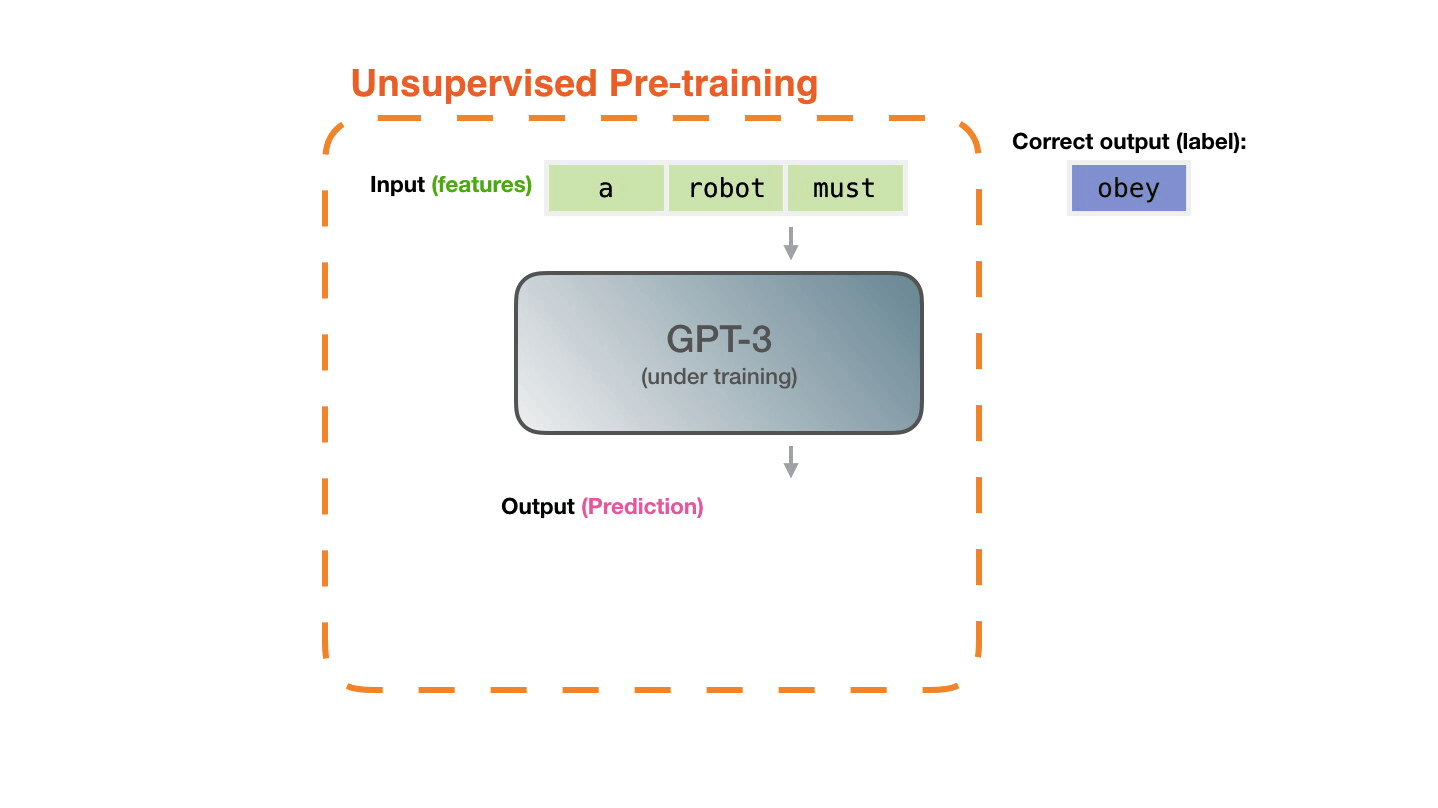
**Pre-training**: Virtually all of the compute used during pretraining phase
:::
### 🎀 Fine-Tuning {background-color="white"}
::: {#fig-fine-tuning style="width:90%; text-align: center; margin-left: auto; margin-right: auto;"}
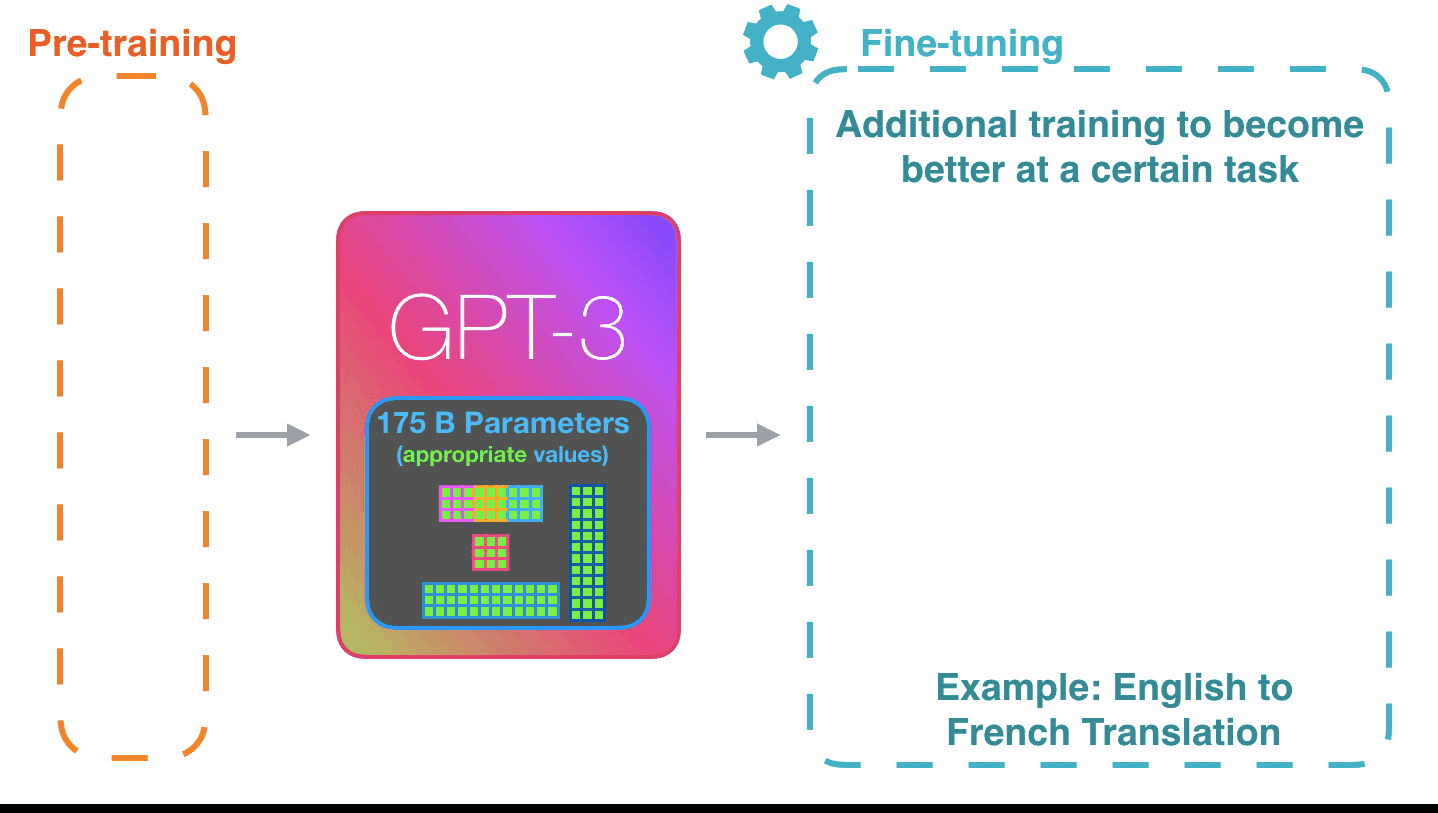
**Fine-tuning**: Fine-tuning actually updates the model's weights to make the model better at a certain task.
:::
:::
### 🍎 Training LLMs {.smaller background-color="white"}
:::: {.flex-container style="align-items: flex-end;"}
::: {.column style="width:33%;"}
::: {#fig-it-hungers}

It's hungry!
:::
:::
::: {.column style="width:60%;"}
::: {#fig-evolution}

Visualization from @yang2023harnessing
:::
:::
::::
<!--
### 💾 Evaluating Checkpoints {background-color="white"}
```python
from typing import Optional
import os
from pathlib import Path
from transformers import LlamaForCausalLM, AutoTokenizer
tokenizer = AutoTokenizer.from_pretrained("meta-llama/Llama-2-7B-hf")
def load_model(ckpt_dir) -> LlamaForCausalLM:
return LlamaForCausalLM.from_pretrained(ckpt_dir)
def eval_model(model, max_length: int, prompt: str) -> str:
return (
tokenizer.batch_decode(
model.generate(
**tokenizer(prompt, return_tensors="pt"),
max_length=max_length,
),
clean_up_tokenization_spaces=True,
skip_special_tokens=True,
)[0]
)
def load_and_eval_model_from_checkpoint(
step: int,
max_length: int = 64,
prompt: Optional[str] = None,
ckpt_root: Optional[os.PathLike | Path | str] = None,
) -> str:
print(f"Loading model from checkpoint at global step: {step}")
prompt = "What is it like in there?" if prompt is None else prompt
ckpt_root = Path("checkpoints") if ckpt_root is None else Path(ckpt_root)
ckpt_dir = ckpt_root.joinpath(f"global_step{step}")
return (
eval_model(
model=load_model(ckpt_dir.as_posix())
max_length=max_length,
prompt=prompt,
)
)
```
### Model Evaluations {background-color="white"}
::: {.panel-tabset}
#### 7000
Tokens: 88B
```python
>>> print(load_checkpoint(7000))
Loading model from checkpoint at global step: 7000
"What is it like in there?"
"""
I'm not sure if it's a good idea to use a different name for the same thing,
but I'm sure it's a good idea to use a different name for the same thing.
I'm not sure if it's a good idea to use a different name for the same thing,
but I'm sure it's a good idea to use a different name for the same thing.
I'm not sure if it's a good idea to use a different name for the same thing,
but I'm sure it
"""
```
#### 12000
Tokens: 150B
```python
>>> print(load_checkpoint(12000))
Loading model from checkpoint at global step: 12000
"What is it like in there?"
"""
What is it like in there?
The people are very friendly and helpful.
What is it like in there?
The people are very friendly and helpful.
What is it like in there?
The people are very friendly and helpful.
What is it like in there?
The people are very friendly and helpful.
What is it like in there?
The people are very friendly and helpful.
What is it like in there?
"""
```
#### 17000
Tokens: 215B
```python
>>> print(load_checkpoint(17000))
Loading model from checkpoint at global step: 17000
"What is it like in there?"
"""
I’m not sure what to expect. I’m not sure what to expect from the people I’m
with. I’m not sure what to expect from the people I’m with. I’m not sure what
to expect from the people I’m with. I’m not sure what to expect from the people
I’m with.
I’m not sure what to expect from the people I’m with.
I’m not sure what to expect from the people I’m with.
I’m not sure what to expect from the people
"""
```
#### 22000
Tokens: 277B
```python
>>> print(load_checkpoint(22000))
Loading model from checkpoint at global step: 22000
"What is it like in there?"
"""
I’m a 20 year old guy from the UK. I’m a student at the University of
Manchester, studying Computer Science. I’m a big fan of the band, The Beatles,
and I’m a huge fan of the movie, The Wizard of Oz. I’m a huge fan of the band,
The Beatles, and I’m a huge fan of the movie, The Wizard of Oz.
I’m a big fan of the band, The Beatles, and I’m a huge fan of the movie
"""
```
#### 32000
Tokens: 400B
```python
>>> print(load_checkpoint(32000))
Loading model from checkpoint at global step: 32000
"What is it like in there?"
"""
I've been to the US and I've been to Canada.
In the US, it's a lot like the US.
In Canada, it's a lot like the US.
In the US, it's a lot like the US.
In Canada, it's a lot like the US.
In the US, it's a lot like the US.
In Canada, it's a lot like the US.
In the US, it's
"""
```
#### 40000
Tokens: 503B
```python
>>> print(load_checkpoint(40000))
Loading model from checkpoint at global step: 40000
"What is it like in there?"
"""
The first thing you notice when you enter the room is the size. It’s huge. It’s
like a football field. It’s a lot of space.
The second thing you notice is the light. It’s bright. It’s bright.
The third thing you notice is the sound. It’s loud. It’s loud.
The fourth thing you notice is the smell. It’s a lot of smells. It’s a lot of smells.
The fifth thing you notice is the temperature. It’s hot.
"""
```
:::
-->
<!-- ::: -->
<!--
- Being trained on:
:::: {.flex-container style="flex-direction:row; justify-content: space-around;"}
::: {.flex-container style="flex-direction:column;"}
🇺🇸English
🇯🇵日本語
🇫🇷French
🇩🇪Deutsch
🇪🇸Español[^bsc]
🇮🇹Italian
:::
::: {.flex-container style="flex-direction:column;"}
🧪 scientific text
🖼️ images
📊 tables
➕ equations
📖 proofs
:::
::: {.flex-container style="flex-direction:column;"}
📆 structured data
⛓️ sequences
⏰ time-series
🕸️ graphs
🌀 fields
:::
::::
[^riken]:|
[Argonne and RIKEN sign a MOU in support of AI for science](https://www.anl.gov/article/argonne-and-riken-sign-a-memorandum-of-understanding-in-support-of-ai-for-science)
[^bsc]:|
Collaborations with Barcelona Supercomputing Center
-->




























